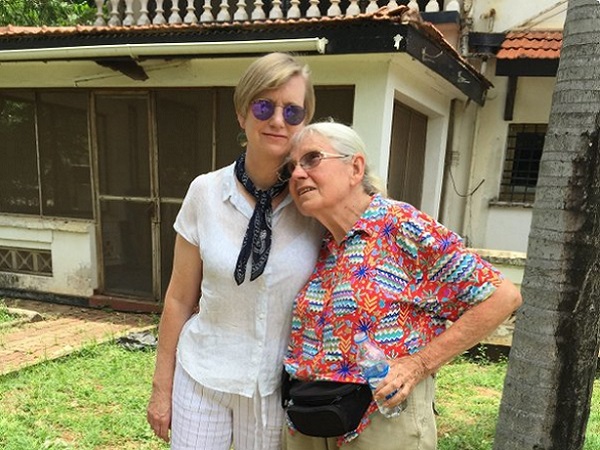Last month, one of the key differences between the two major parties in the Federal election campaign was the proposal of a National Broadband Network (NBN). The Government’s $43 billion proposal promised optic fibre coverage to 90 per cent of homes and businesses.
The NBN is set to become a wholesale service provider with most of the funding coming from the private sector. The Coalition matched this with a $6 billion proposal using existing networks.
The Government’s scheme marks a significant shift from Rudd’s initial $4.7 billion broadband proposal. It would see coverage for regional and rural areas in Australia and provide speeds of up to one gigabyte per second.
The network will become the country’s telecommunications industry service provider and resolve issues regarding the privatisation of Telstra.
Peter Chen, a lecturer in public policy and political science at the University of Sydney, says the Labor proposal was a political strategy to deal with Telstra.
‘The NBN is a policy to rewire fundamental infrastructure,’ he says. ‘Leading up to the privatisation of Telstra, there were talks of structurally separating the most competitive part of Telstra, but that was not done… so the proposal now forces structural separation on Telstra.’
The broadband network will be established under a separate company, NBN Co Limited, which is currently giving Tasmania access to fibre.
The Government proposed the NBN Co with a mandate to protect the public interest, Chen says.
He argues the election campaign was lacking in substantive content and broadband became a point of difference.
‘The NBN deals with past policy failures and is likely to pay for itself in the end as it reaches rural communities. The Coalition’s proposal however, is based on a free market enterprise model and is suited for urban areas getting serviced,’ Chen says.
Once the broadband is operational, the government plans to sell the NBN after five years of construction, which will be worth approximately $46 billion.
The future-proof technology focuses on optic fibres, which has the potential to boost Australia’s economy. Prime Minister Julia Gillard’s emphasis during the election on e-health and education in rural areas had been designed to link in with the NBN.
Ben Eggleton, director of the Centre of Excellence for Ultrahigh-bandwidth Devices for Optical Systems (CUDOS) and Professor of Physics at the University of Sydney, agrees the $43 billion investment has the potential to save lives.
‘By rolling out a broadband infrastructure, with the level of bandwidth optical fibre offers, this can provide microscopically accurate medical services, education and other services to the most remote Australians,’ he says.
Investing in broadband would provide the bandwidth for an industry to do business. With South Korea leading by example, it will enable the country to remain internationally competitive, Eggleton says.
‘South Korea has leapfrogged to number one in less than 10 years by investing billions in its broadband infrastructure. We need to build this infrastructure to stimulate the economy in the long term.’
Eggleton, who leads a team in creating optical fibres, says the NBN is bringing fibre optics closer and closer to users for increased bandwidth.
‘Optical fibre is like a strand of glass,’ he says. ‘It does not really transmit much power, but instead it is information in the form of light that has been modulated.’
The fibre technology is about future-proofing the nation where the NBN will eventually provide speeds of up to one gigabyte per second. Eggleton says this can be achieved by building a strong backbone for the network.
Moreover, Eggleton says the Coalition’s proposal of the Hybrid Fibre Coax is not future-proof, but rather bandwidth is the key to revive the industries.
‘Copper cannot outrun the speed of light,’ he says. ‘Wireless has limited bandwidth, where unless there is a mobile phone tower in front of every house, there is little bandwidth. Optical fibre going into homes and businesses has incredible capacity.’
The broadband promises increased access and bandwidth in Australia, but the founder of OzEmail and Member of Parliament, Malcolm Turnbull is unconvinced. Writing in The Australian during the election campaign, he complains the NBN will be the largest single investment of taxpayers’ funds in Australia’s history. Turnbull says the proposal is not driven by market demands, but politicians and will be ‘wasting billions of taxpayers’ dollars on white elephants’.
Also, during the election campaign, there was little information available to the public about what the NBN entails.
Independent telecommunications consultant and former ALP advisor, Kevin Morgan, said on the Chris Smith Afternoon Show in August the proposal was a ‘massive overkill’ and ‘almost criminal’. He hinted the NBN was a ‘purely political cover up’ for the failed Aussat project launched by the Hawke Government in 1981.
‘Just as there were no real numbers which went to cabinet before decision was made for the Aussat project, the NBN also has no cost benefit analysis,’ Morgan said in the radio interview.
Morgan also mentioned Australians were so impressed by the cost of the NBN during the election they did not ask any questions and that the appeal of e-health, education was a mass market strategy.
The NBN proposal promises future-proof technology to boost Australia’s economy and future. But plans in the past have either been dismissed or failed. Is the NBN an effective investment for Australians? Only time will tell.
Joni Sham is a Bachelor of Law and Bachelor of Media and Communications student at the University of Sydney. You can read more about her work at her Cultural Japan.




